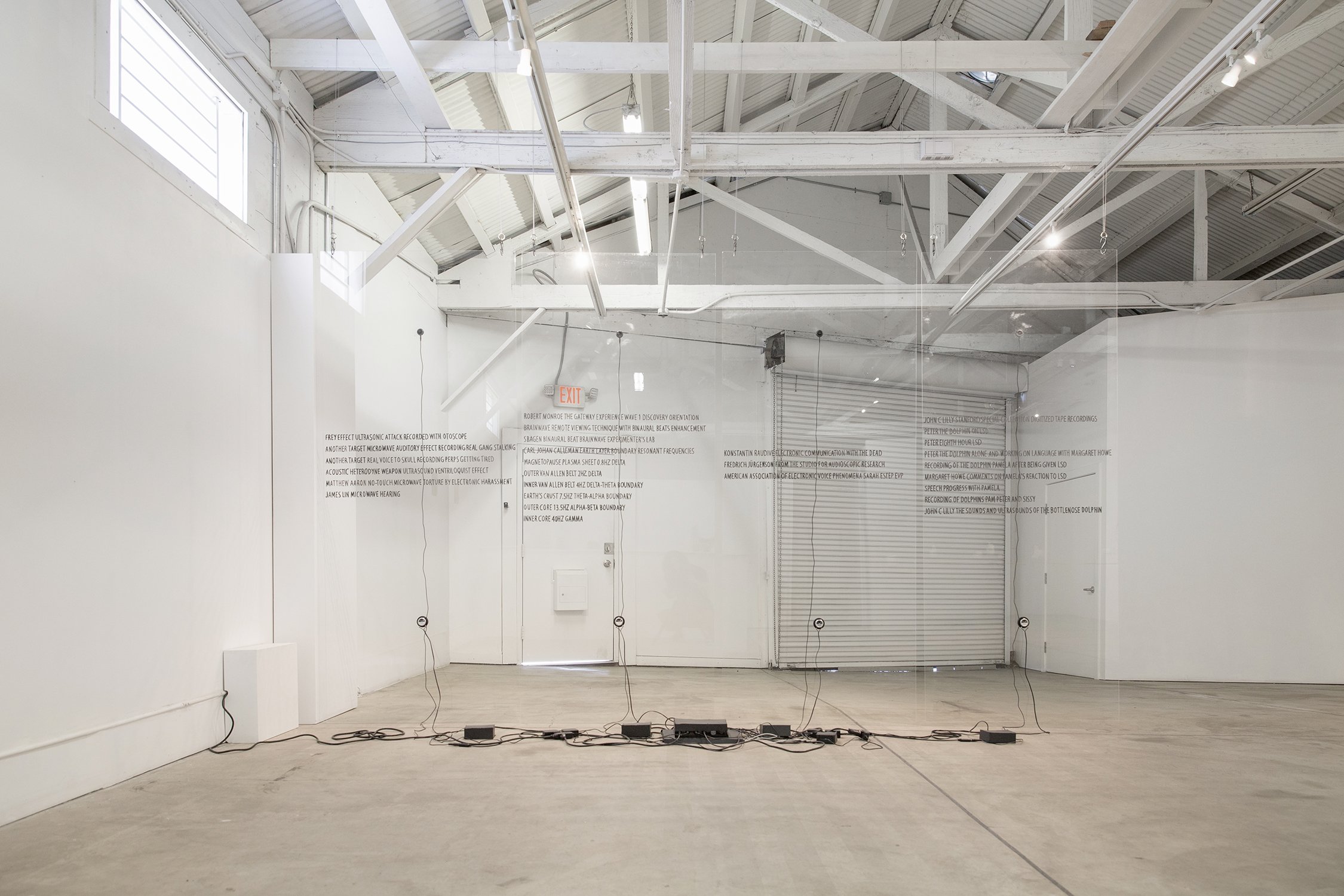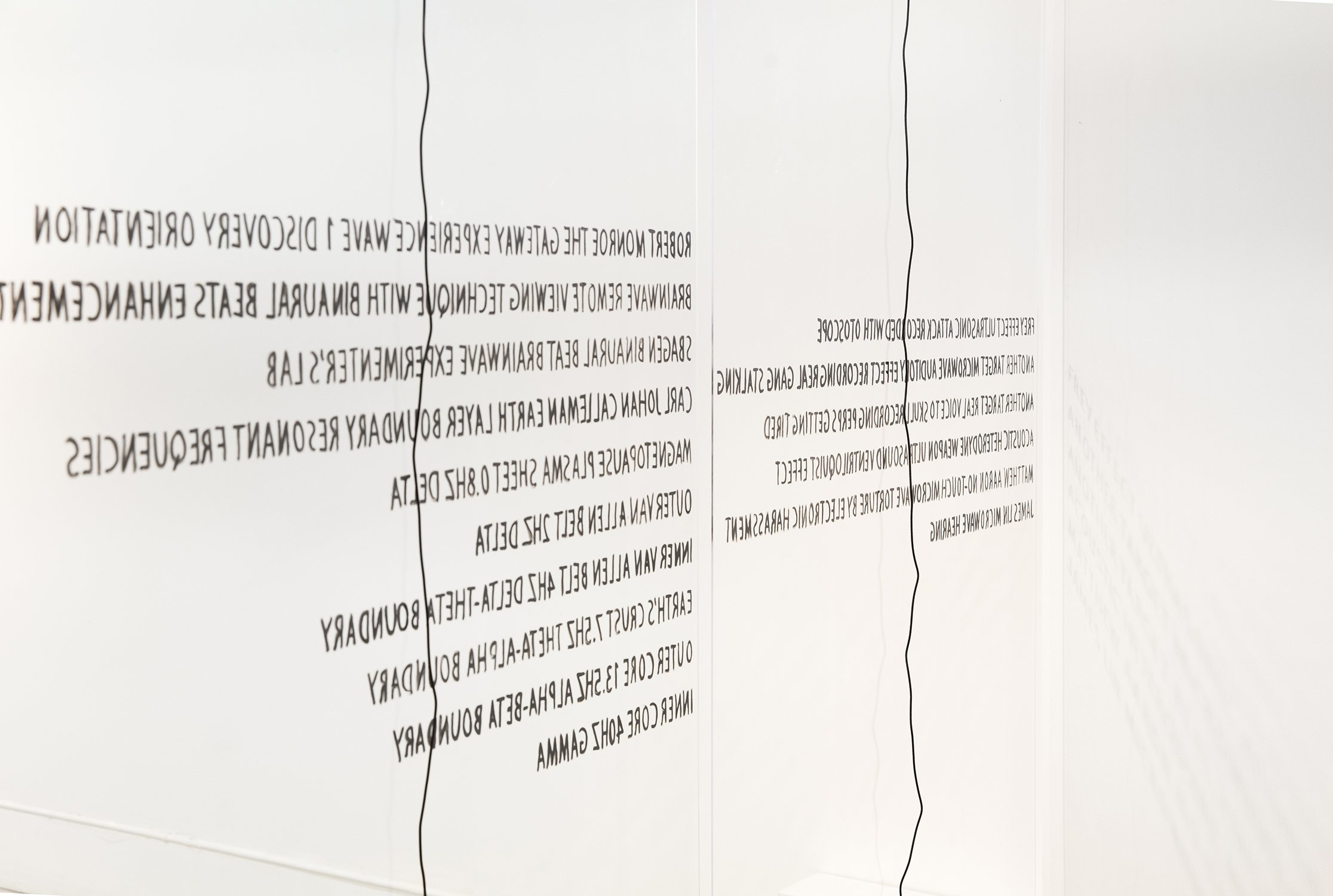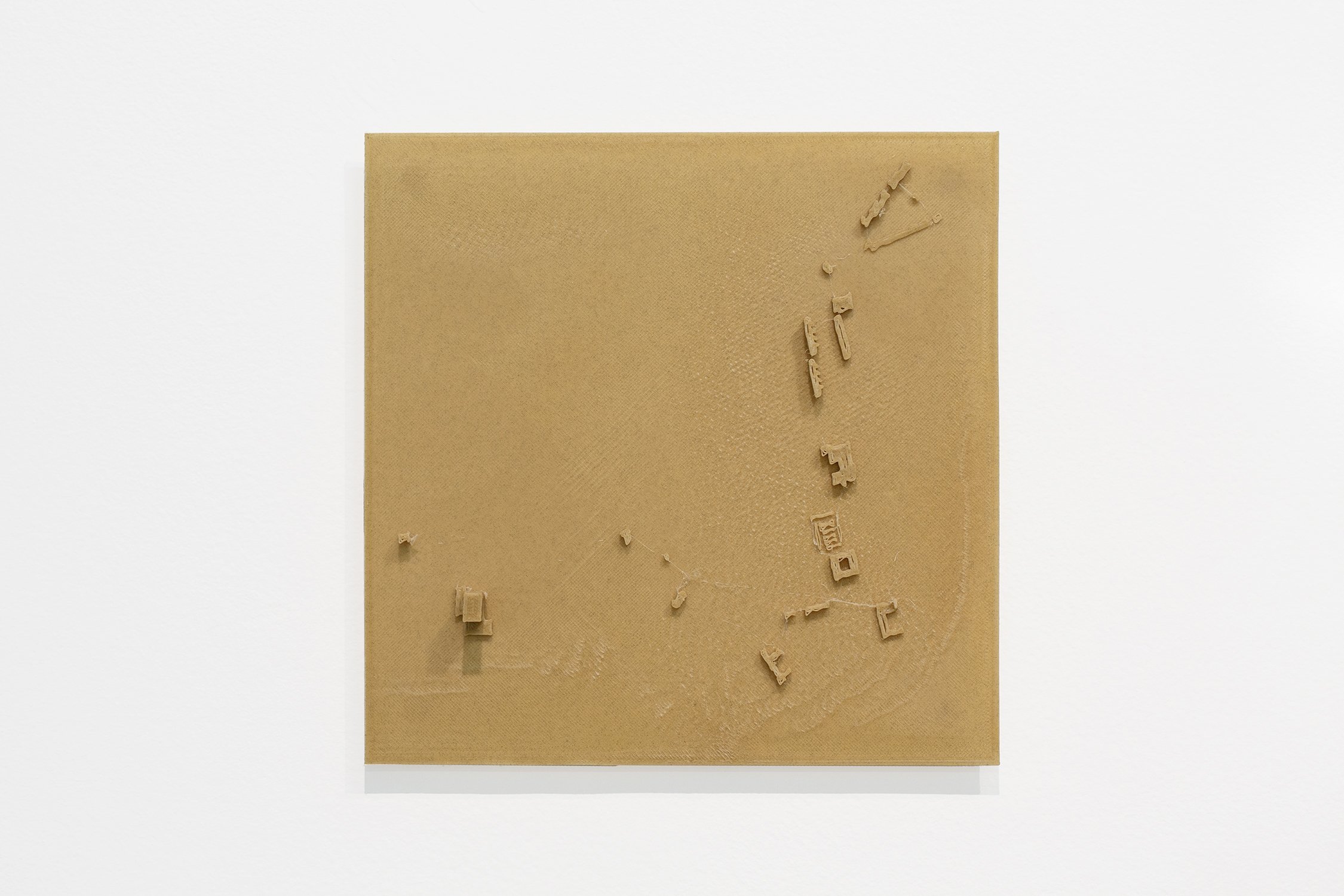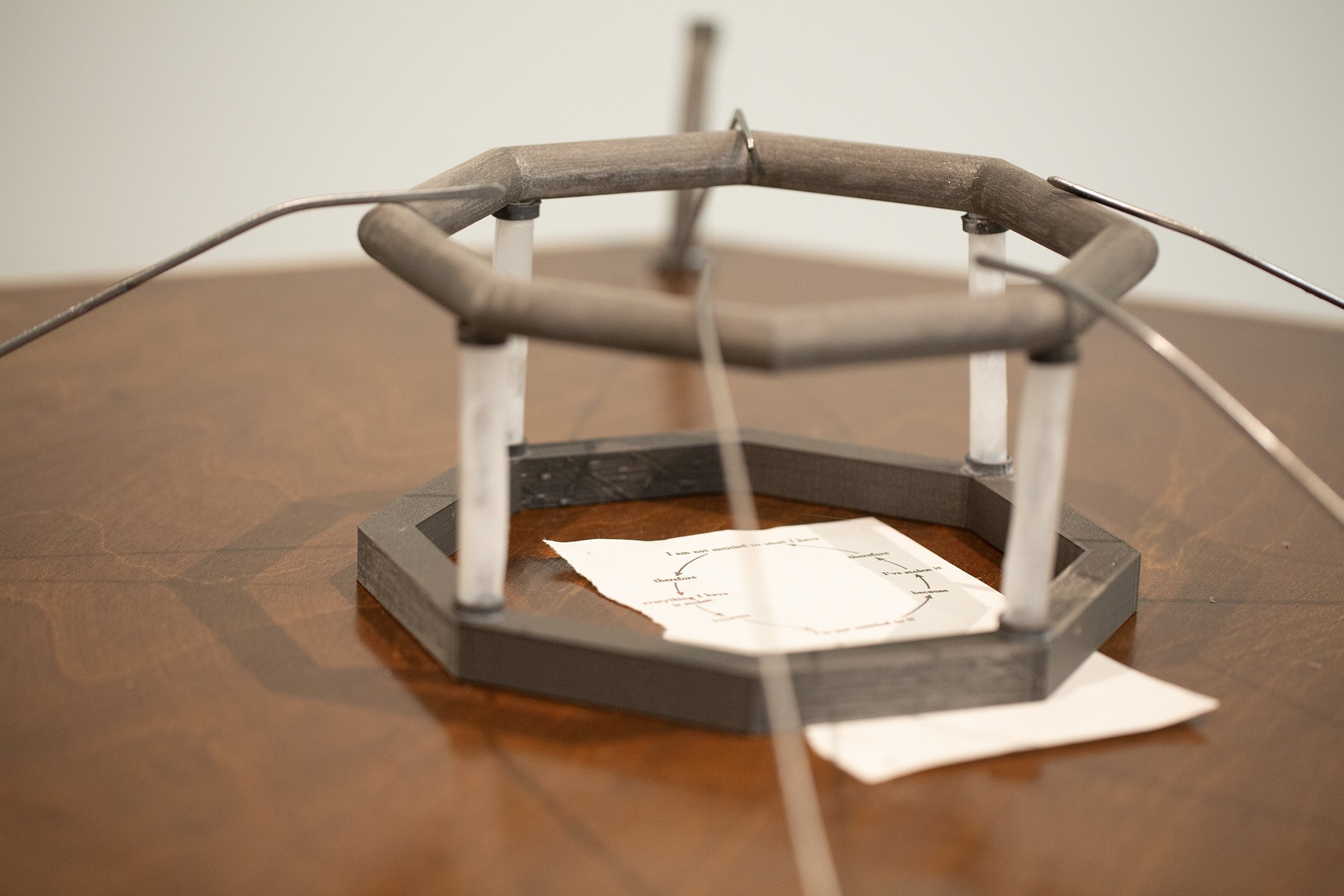



































































































TELEPATHIC RADIATION CAUSALITY
Teresa Piecuch, Andrew Moses
June 24 - July 29, 2023
“The unconscious is housed. Our soul is an abode. […] Now everything becomes clear, the house images move in both directions: they are in us as much as we are in them.”
- Gaston Bachelard, The Poetics of Space 1
In Commentarium in convivium Platonis de amore, Marsilio Ficino (1433-1499) constructs an erotology that draws on a synthesis of two Platonic concepts: radiology and active visual rays. In The Republic, Plato analogizes the ideal effect of the monarch to solar radiation or emanation; where causation is understood through a radiative model; archetypal forces are discharged into the most distant and empty spaces of the political body. Ficino transposes Plato’s political concept of the solar monarch to an erotic “radiocracy of the heart;”1 where loving infatuation occurs in terms of an optical blood vapor that emanates into and eventually condensates in the eyes of the other. When blood vapor condensates in the foreign body, it inculcates in it a striving and longing for its origin; hence, fascination and an umbilical-like enclosed, shared circulation with the other. Ficino’s telepathic blood transfusion erotology preserves Plato’s project of rendering imaginable the causation of the real of immediate experience from the mind-independent most real.
In a gaze through time, Piecuch interfaces memory with machine-learning and spectral analysis in order to visually and sonically reconstruct a transient, origin- route in her past. Miejsca do miejsca (lit., “places to place”) draws on Piecuch’s childhood-to-adolescent daily route around Piła, Poland, reconstructing buildings from biased and limited machine learning algorithms trained on her comparably incidental memory. A sound component renders ambient recordings of city construction reproducible through spectral mapping onto the piano, then played by Piecuch.
In Moses’ Firmament, each of four real-time audio neural networks is trained on a distinct dataset of recordings of para-scientific experiments, either funded or ostensibly perpetrated by clandestine State agencies, in using sound to interface with an Other. The networks reconstruct each other in live feedback.
Discarded Organ (currency of transference) features a model of Franz Mesmer’s baquet beside a diagram from R.D. Laing’s paranoid-simulative “Knots.” Mesmer’s baquet is an 18th century capacitor to which Mesmer’s patients would place their ailing body members for rejuvenation by way of supposed electromagnetic Flutbarkeiten (“floodability”). “Animal magnetism” through the baquet is reported to have facilitated thought transference between the proto- analyst (e.g., Mesmer himself) and analysand.
Seminaiadma, the name of the smallest dyad in the piece (3.5 cents: the edge of perceivable pitch difference), uses an ensemble of violins tuned in extended just intonation relationships to maximally reinforce artificially perceived or aural-illusory difference tones, which hover near the threshold where pitch becomes rhythm from 40 Hz to 3 Hz.
1 Sloterdijk, Peter. Spheres I. Bubbles. trans. Wieland Hoban. Semiotext(e). 2011.
Teresa Piecuch is a Polish-born, Los Angeles-based multimedia artist. She works with 3D printing, sculpture, painting, Google Maps and machine learning. She holds an M.Arch from Politechnika Poznańska and an MFA from the California Institute of the Arts.
Andrew Moses is from Los Angeles. His compositions have been presented by venues including LA Phil Green Umbrella series, LA Phil Noon-to-Midnight series, International Contemporary Ensemble at Ojai Music Festival, Wild Up at Regent Theater, and Yellow Barn. He holds an MFA in Art and Technology from California Institute of the Arts.


